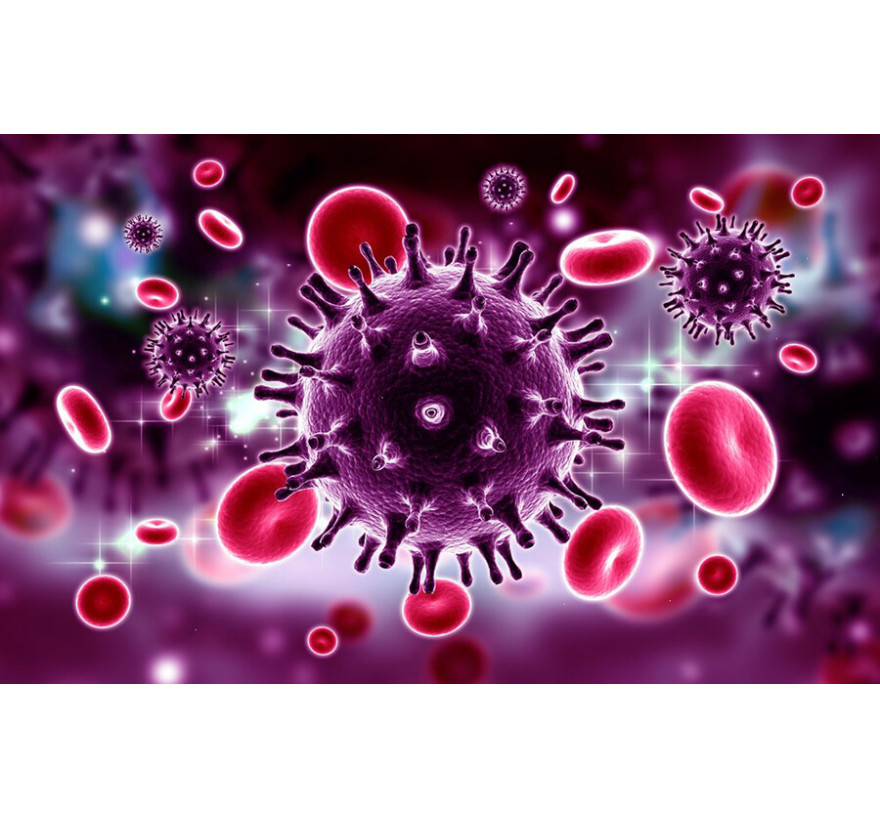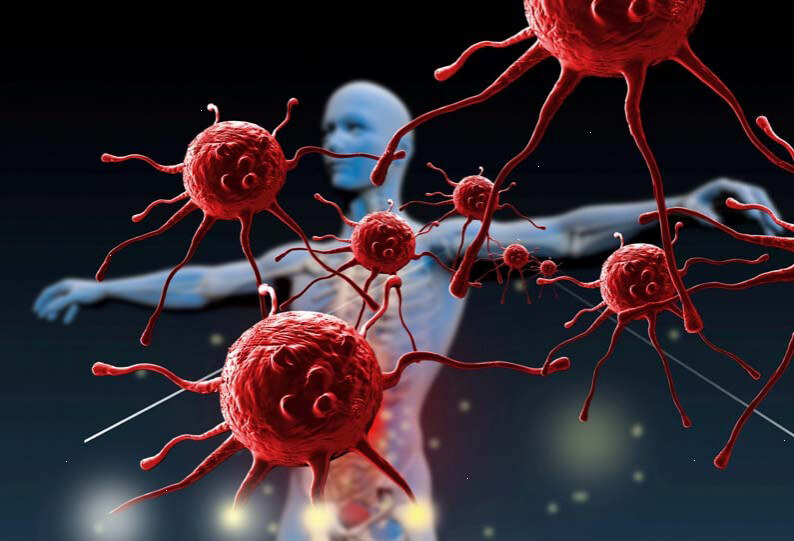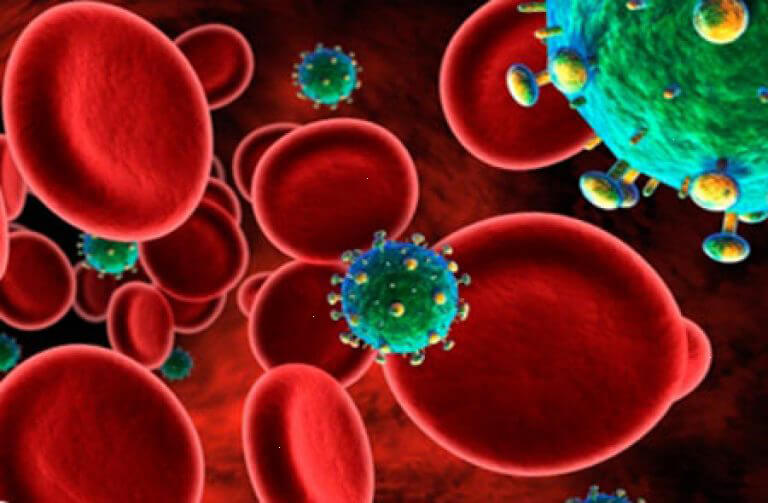What is Immunodeficiency?

This disease in people with immunodeficiency is also more difficult to treat.
According to the origin, immunodeficiencies are divided into primary (i.e., hereditary) and secondary (i.e., acquired).
The main signs of immunodeficiency of both types are chronic infectious diseases. In such conditions, infections of the upper and lower respiratory tract, skin, ENT organs, and others are affected. The manifestation of diseases, their severity and types are determined depending on what type of immunodeficiency a person has. Sometimes, due to immunodeficiency, a person develops allergic reactions and autoimmune diseases.
Primary immunodeficiency
Primary immunodeficiency is a hereditary disease of the immune system. According to medical statistics, a similar defect appears in one child per ten thousand. Primary immunodeficiency is an illness that is transmitted to children from parents. There are many forms of this condition. Some of them can openly appear almost immediately after the birth of a child; other forms of immunodeficiency have not been felt for many years. In approximately 80% of cases, by the time of diagnosis of primary immunodeficiency, the patient's age does not exceed twenty years. About 70% of cases of primary immunodeficiency are diagnosed in males, since most syndromes are directly related to the X chromosome.
With primary immunodeficiency, genetic defects are divided into several groups. With humoral immunodeficiencies, the body does not produce sufficient antibodies or immunoglobulins; with cellular immunodeficiencies, lymphocytic immunodeficiency occurs; with defects in phagocytosis, bacteria cannot be fully captured by leukocytes; with defects in the complement system, inferiority of proteins that destroy foreign cells is observed. In addition, combined immunodeficiencies are distinguished, as well as a number of other immunodeficiencies, in which there are problems with the main links of the immune system.
In most cases, primary immunodeficiencies are conditions that persist in a person throughout his life. However, a lot of patients who were diagnosed with the disease on time and provided adequate treatment have a normal life expectancy.

Secondary immunodeficiency
Secondary immunodeficiency should be understood as the presence of acquired diseases of the immune system. In this case, as with primary immunodeficiencies, we are talking about too frequent attacks of infectious diseases in connection with a weakened immune system. The most famous example of this type of immunodeficiency is AIDS, which develops as a result of HIV infection. In addition, secondary immunodeficiencies appear under the influence of drugs, radiation, certain chronic diseases. Secondary immunodeficiency can be observed in patients who go to the doctor with complaints of a variety of ailments.
In general, all actions that, one way or another, cause a weakening of the human immune system, contribute to the development of secondary immunodeficiency in him.
In addition, this condition occurs with food deficiencies, in which there is a protein-calorie deficiency, as well as a lack of vitamins and minerals. In this case, a deficiency of vitamin A, selenium, and zinc is especially detrimental to the human condition. Also at risk of immunodeficiency include people with chronic metabolic disorders resulting from diseases of the liver and kidneys. To some extent, the development of immunodeficiency and people who have undergone a major surgery or injury.
In secondary immunodeficiencies, it is important to detect bacterial infections as early as possible and take the necessary treatment.
How is immunodeficiency manifested
The main and, in some cases, the only sign of immunodeficiency is a person's predisposition to a very frequent manifestation of infectious diseases. For a state of immunodeficiency, a manifestation of recurrent respiratory infections is characteristic. However, in this case, doctors clearly distinguish between manifestations of immunodeficiency and the so-called soreness of children, who are often infected with a cold from peers.
A more characteristic sign of immunodeficiency is the manifestation of a severe bacterial infection, which has a recurrent nature. As a rule, during its development, a recurrence of sore throat, as well as infection of the upper respiratory tract, periodically occurs. As a result, the patient develops chronic sinusitis, bronchitis, otitis media. Also a characteristic feature of the immunodeficiency state is the ease of development and subsequent progression of diseases. So, in patients with immunodeficiency, bronchitis very easily passes into pneumonia, respiratory failure and bronchiectasis are manifested.
In addition, in such patients, infections of the skin, mucous membranes of the body are very often manifested. So, the most characteristic conditions in this case are mouth ulcers, periodontitis, thrush, which is resistant to treatment. In addition, in patients with immunodeficiency, warts and papillomas very often develop on the body, eczema and alopecia occur.
A typical manifestation of this condition can also be a number of digestive system disorders, for example, diarrhea, malabsorption.
In more rare cases, with immunodeficiency, hematological disorders are diagnosed, for example, leukopenia, autoimmune hemolytic anemia, etc.
In some cases, neurological seizures can also be observed: convulsions, encephalitis, arthritis, vasculitis. There is evidence of an increased incidence of gastric cancer in such patients.

Diagnosis of immunodeficiency
In the process of diagnosing an immunodeficiency state, the doctor always pays close attention to a family history. So, it is quite possible that the family has frequent autoimmune diseases, early mortality, and the early manifestation of malignant diseases. An adverse reaction to vaccination may also indicate a similar diagnosis. Radiotherapy of certain areas of the body can also be a prerequisite for establishing a similar diagnosis.
When examining a patient, the attending physician always pays attention to his appearance. As a rule, such a person looks especially painful, he has very pale skin, he constantly suffers from general malaise. A close examination of the skin is important, since with immunodeficiency pyoderma, a vesicular rash, and eczema are often manifested.
In addition, other manifestations are also characteristic of the state of immunodeficiency: the occurrence of eye inflammation, chronic diseases of the ENT organs, edema of the nostrils, chronic lingering cough.
To establish an accurate analysis, a thorough examination of the patient is necessary. At the first stage of research, as a rule, a detailed blood test, screening tests, and determination of the level of immunoglobulins are prescribed. Other studies are also being prescribed that can determine what type of infection occurs in humans. If a patient has a recurring infection, then examinations of such a patient are carried out regularly. If necessary, depending on the clinical situation, smears are taken and subsequent microbiological studies.
Immunodeficiency Complications
Serious infectious diseases should be noted in the first place as the often manifested complications of both types of immunodeficiencies. This is sepsis, pneumonia, abscess, etc. In each case, the manifestations of immunodeficiency complications are determined individually.
AIDS virus
The human immunodeficiency virus is usually classified as a family of retroviruses. Today, doctors determine two types of this virus - HIV1 and HIV2. Their fundamental differences are in antigenic and structural features.
The human immunodeficiency virus is not resistant to environmental influences. Almost every substance with disinfecting properties destroys it. It is believed that this virus can be in every biological fluid of the human body. But in the absence of blood in such a liquid, the amount of virus is not enough for infection to occur. Therefore, saliva, sweat, tears, vomit are considered non-hazardous biological fluids. At the same time, in every fluid that is associated with lymph, it contains the virus in large quantities. That is why there is a very high risk of HIV transmission during sexual intercourse, as well as in the process of breastfeeding. Therefore, the most dangerous body fluids in terms of HIV infection are blood, vaginal secretions, lymph, sperm, cerebrospinal, ascites, pericardial fluids, breast milk.
The human immunodeficiency virus, once in the body, enters the target cells, which are regulators in the process of the immune response. Gradually, the virus enters other cells, and the pathological process occurs in different systems and organs.
In the process of death of cells of the immune system, immunodeficiency manifests itself, the symptoms of which are caused by the virus. Under its action, a person develops diseases that are both infectious and non-infectious in nature.
The severity of the disease and the rate of its progression directly depends on the presence of infections, the genetic characteristics of the human body, its age, etc. The incubation period lasts from three weeks to three months.
After this, the stage of primary manifestations begins, at which the patient manifests a variety of clinical symptoms and antibodies are actively produced. This stage in different people can occur in different ways. Perhaps its asymptomatic course, the presence of acute infection without secondary diseases, as well as infection with secondary diseases.
In the process of the transition of the virus to the subclinical stage, immunodeficiency gradually increases, the lymph nodes in a person increase, while the rate of HIV multiplication slows down. This stage is quite long: it sometimes lasts up to twenty years, although its average duration is about six years. Later, the patient develops acquired immunodeficiency syndrome.
Acquired Immunodeficiency Syndrome
For the first time, the world learned about acquired immunodeficiency syndrome in the mid-80s of the twentieth century. At that time, doctors discovered an unknown disease, which was characterized by the manifestation of immunodeficiency in adults. It was found that their immune deficiency manifested itself in adulthood. Consequently, this disease was then called the acquired immune deficiency syndrome, abbreviated AIDS. Today AIDS has spread to the level of the epidemic.
With the development of acquired immunodeficiency syndrome in a patient, his body cannot resist attacks even against relatively harmless microorganisms.
Diagnosis of HIV infection is carried out using special laboratory research methods. However, drugs that effectively affect the AIDS virus do not exist today.
Treatment is mainly aimed at overcoming secondary infections that develop due to immunodeficiency.
Immunodeficiency Treatment
The most important point for people who are diagnosed with immunodeficiency of any type is to follow the principles of a healthy lifestyle and avoid infections. It is equally important to have regular visits to the dentist.
It is important for patients with immunodeficiency in time to diagnose fungal and bacterial infections, and conduct their subsequent adequate therapy.
There are conditions in which continuous prophylactic antibiotic treatment is necessary. If a person has chest infections, then in this case, it is advisable to treat with the help of physiotherapy, as well as regular performance of special physical exercises. Sometimes, as a prophylactic, it is necessary to take drugs with antiviral effects, for example, amantadine, rimantadine.
In most cases, therapy for immunodeficiency is carried out using intravenous or subcutaneous administration of immunoglobulins. However, it should be noted that immunoglobulin treatment is contraindicated in patients with heart failure. To date, other types of treatment for immunodeficiency are also practiced, but some of them are still at the experimental development stage.
In the process of treating primary immunodeficiency, it is important in each case to determine how justified the use of liquid vaccines is. In all cases, it is important for patients who have been diagnosed with primary immunodeficiency not to drink alcohol, not to smoke.
Immunocorrection to date is carried out using several methods. This is bone marrow transplantation, the use of immunomodulators, immunoglobulins.
In the treatment of secondary immunodeficiency, the general principles of care are used. This is vaccination, the fight against infection, and replacement therapy.
Immunodeficiency Prevention
To prevent the manifestation of primary immunodeficiencies, it is necessary to determine the likely carriers of defective genes in families that have a positive history. With certain pathologies, prenatal diagnosis is possible.
Due to the hereditary nature of primary immunodeficiencies, there are currently no preventative measures for this type of disease.
As a preventative measure to prevent secondary immunodeficiencies, it is important to avoid becoming infected with HIV. To do this, it is very important to never allow unprotected sexual contacts, to make sure that the used medical instruments are sterile, etc. Drug addicts are also at risk of HIV infection, who even with a single injection of the drug run the risk of contracting the virus.
